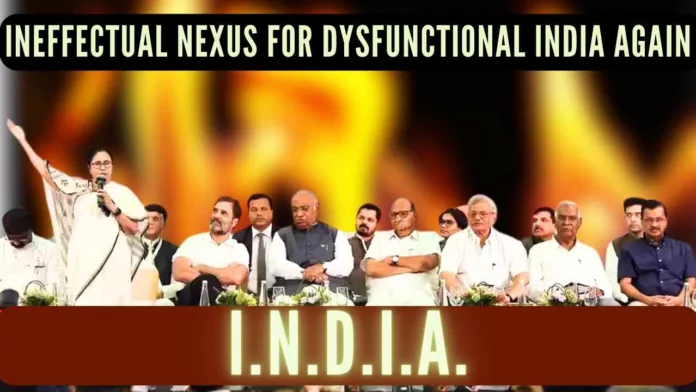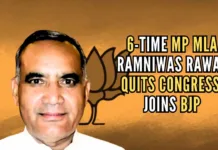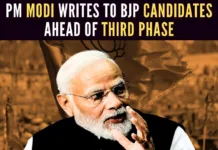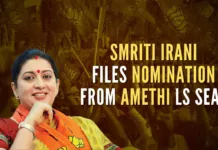
Will I.N.D.I.A. survive and succeed in the misconstrued mission of the Opposition to defeat Modi?
Politics in India is an interesting game of chess. Generally, individual politicians leave and join other political parties for ideological conflicts and/ or selfish gains. The newest confluence of the so-called opposition parties (mostly regional) was held in Bengaluru aimed at “defeating” the undefeatable Modi in the 2024 Parliamentary elections. Reportedly, twenty-six opposition parties met and agreed, at least for the poorly planned publicity, to call themselves the “Indian National Democratic Inclusive Alliance (I.N.D.I.A.).” In my opinion, it is nothing more than an “Ineffectual Nexus for Dysfunctional India Again,” a topic of this article.
Let us ask what makes an alliance successful[1]? The answer is if it includes the right set of partners. According to a study, roughly three-quarters of failed alliances can be attributed to the wrong choice of partners and lack of commitment. That pretty much explains the 26-party alliance with partners from very disparate ideologies with selfish agenda and motivations, little or no mutual trust, and a total lack of strategic vision and agenda for the nation (Bharat/ India/ Hindustan).
We surmise that the opposition parties’ ineffectual alliance is that of only convenience. There are vast cultural differences, their objectives are incompatible, they lack commitment, their governance structure is very ineffective (almost non-existent), no leadership for the alliance, and they are overestimating their collective potential to defeat Modi. Earlier research shows that under such circumstances, the alliance has an 80% chance of failure. Thus, the alliance, at best, may be short-lived[2].
This hurriedly formed alliance called I.N.D.I.A. could not give one or more names who has the energy, experience, vision, and depth and breadth to lead them and move India forward on the global stage. I see no one in any of the twenty-six parties with even 20% of what Modi has undeniably accomplished since becoming the Prime Minister in 2014. Can anyone deny that India’s democracy and development under Modi’s leadership have functioned well and thrived? Today, India is the fifth largest economy and heading in the direction of being the third largest soon.
We call 26-party I.N.D.I.A. a ‘nexus’ because it is merely a loose link or connection among a group of political parties working serially. Their goal of defeating Modi in itself is neither objective nor strategic because they have nothing better to offer except calling names for Modi. Most of them have no national outreach and/ or name recognition. They have an ill-conceived notion that their chosen name INDIA will create a debate about ‘India versus Bharat.’ They are truly mistaken if they believe that today’s voter is ignorant of what Modi has done for them and the country. The voter should not be underestimated for their wisdom and they cannot be persuaded by just calling their alliance I.N.D.I.A.
It is also a mistaken assumption on the part of the opposition parties that Modi’s party will be hard-pressed not to use INDIA in their campaign because of their alliance acronym. In fact, it will be to the advantage of Modi and his grand alliance called National Democratic Alliance (NDA) with a proven history of extensive infrastructural development agenda under the banner “Sab ka Saath; Sab ka Vikas; Sab ka Prayas; Sab ka Vishwas.
Reportedly, Rahul Gandhi (RaGa)’s underdeveloped brain is behind the creative name INDIA. I wonder, however, if RaGa took the first two words ‘Indian National’ from the original Indian National Congress (INC) party to preserve Nehru-Gandhi dynastic glory. Then, RaGa conveniently stole NaMo’s party name NDA and finally, his creative brain yielded INDIA with ‘I’ for Inclusive. The other four letters are clearly borrowed from elsewhere.
What ‘inclusive’ may imply? The 26-party alliance is inclusive only in their ideology for bringing back wholesale corruption, black marketeering, and large-scale scandals of the yesteryears. Many want to continue their family dynasties, nepotism, and appeasement of Muslims at the expense and ruin of Hindus and Hinduism in Hindustan. The alliance has no vision for keeping the borders safe and secure against India’s potential aggressors.
I cannot imagine I.N.D.I.A. surviving and succeeding in their misconstrued mission of defeating Modi. But one should never forecast the future and not say ‘never’ until it is proven. Our full form of I.N.D.I.A. has used D for dysfunctional with a deeper conviction. First, New India is emerging to be fully functional under Modi after nearly 10 years of continued, consistent, and committed efforts. Should the unexpected 26-party I.N.D.I.A. succeed and return to power, their non-functioning alliance will create a chaotic, disorderly, and dysfunctional India/ Bharat. I.N.D.I.A also has the potential to damage democracy and create deep divisions based on religious bigotry.
As a concluding remark, I recommend that Modi’s NDA should refrain from using INDIA henceforth in any of their political campaigns. NDA leadership should proudly bring back the ancient name Bharat and/ or Hindustan which will connect everyone back to the roots. Bharat will remind us of our proud ancestry and Hindustan will signify that India has been a place for Hindus. Thus, why not promote India as a Hindu Rashtra where people of all faiths are welcome to live in peace and harmony.
Note:
1. Text in Blue points to additional data on the topic.
2. The views expressed here are those of the author and do not necessarily represent or reflect the views of PGurus.
Reference: –
[1] Unleashing the Innovation Power of Alliances – Jan 13, 2022, BCG
[2] ALLIANCE FAILURE AND ALLIANCE SUCCESS: THE 80% RULE – Peter Simoons
PGurus is now on Telegram. Click here to join our channel and stay updated with all the latest news and views
For all the latest updates, download PGurus App.
- An Eye for an Eye (Israel-Iran conflict) and role of the Third Eye (India) - April 29, 2024
- Education and election in Bharat: Race to the top - April 16, 2024
- Kejriwal: “An Insignificant Man” or a corrupt politician with impending prison term - March 24, 2024











Very well written article.
Not disagreeing, but is there anything to be gained from articles likes this?